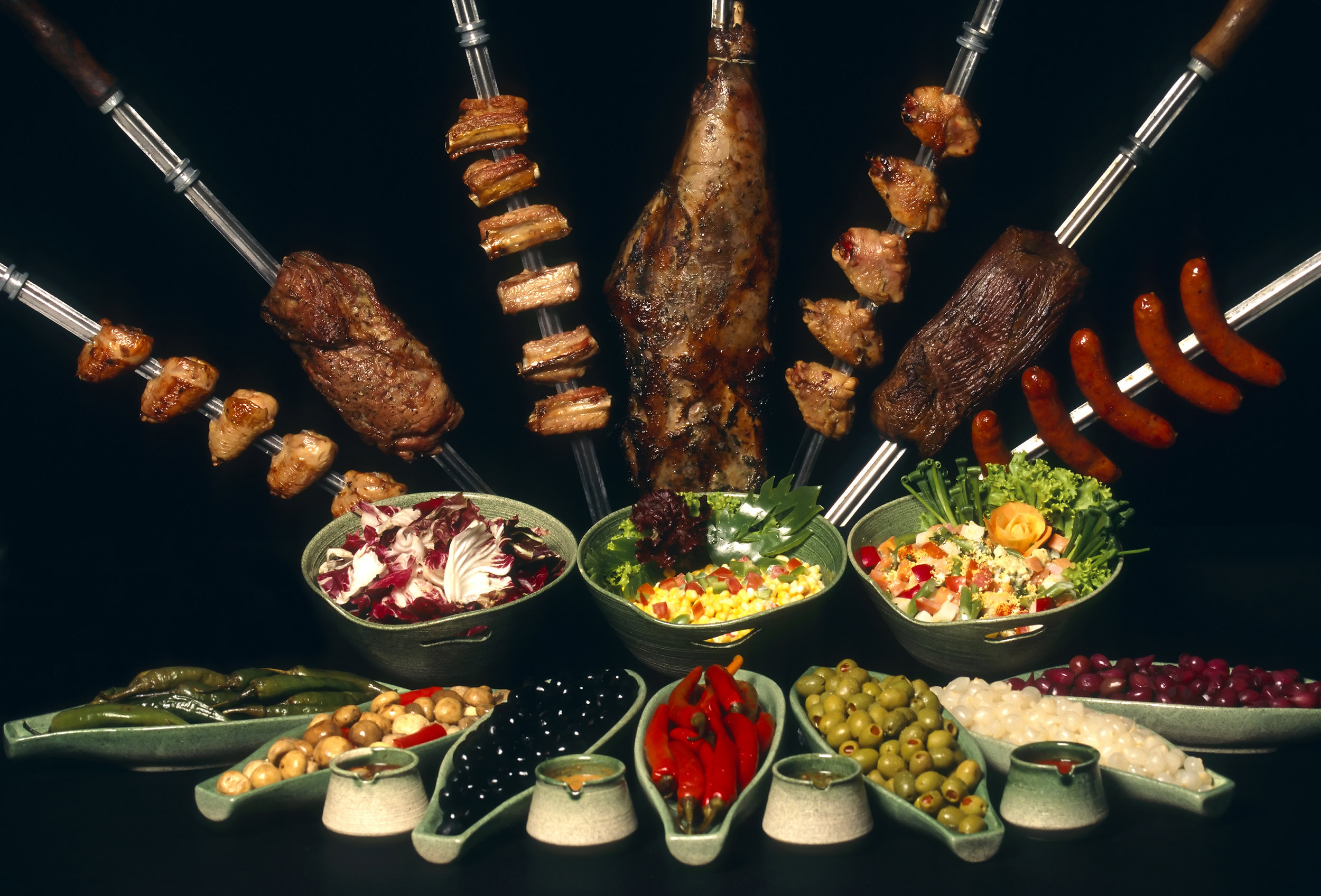Latin American cuisine
Mexico
The cuisine of Mexico is a mixture of indigenous foods, including corn, beans, and peppers, combined with Spanish ingredients of meats and poultry (pork, beef, chicken, goat), and dairy (especially cheese). Other native ingredients used prominently in the cuisine include avocados, tomatoes, cocoa, and squash. Chili peppers give the cooking their distinctive flavor of which jalapeño, poblano, and Serrano are the most well know.
Seasonings include herbs, such as cilantro and thyme, along with cumin, cinnamon, and clove spices. Although enchiladas, tacos, quesadillas, and tamales comprise some of the foods known internationally, Mexican cuisine is far more complex and varies by region. In the north beef, cheese, and wheat flour tortillas are served in burritos and fajitas. Frijoles, pinto beans that have been simmered, mashed, and fried, and Spanish rice, are typically served with meals. The central regions of Oaxaca and Puebla are famous for their red, green, and black moles; intensely flavored sauces made from peppers, chocolate, cumin, cloves, anise, tomatoes, tomatillos, garlic, and sesame seeds typically served with chicken or pork. Moles variations also include ingredients of pumpkin seeds, nuts, and dried fruits. The Baja California peninsula is known as the birthplace of the Caesar Salad, fish tacos, and Spanish-influenced paella. In the south corn tortillas, chicken, and black beans are favored. Along the Pacific central coast from Puerto Vallarta to Acapulco the cuisine centers on fish and seafood, typically grilled or ceviche style that is cold cooked in lime. Further inland from the coast traditional meat stews including birria prepared with goat or lamb in a spicy sauce seasoned cumin, oregano and ginger, and pozole, a pork and hominy stew flavored with chilies are regional specialties. Salsas are a ubiquitous condiment served with food and include fresh varieties like pico de gallo (raw tomatoes, lime, chilies, onions, and cilantro), and guacamole (avocado tomato, chopped onions, and lime), to cooked varieties including Salsa roja (cooked tomatoes, chilies, onion, garlic, and cilantro), and Salsa verde (cooked tomatillos and chilies).
Brazil
Brazil, the largest country in South American, is bounded by the Atlantic Ocean and is home to the world’s largest tropical rain forests located in the Amazon River Basin. Portuguese settlers, African slaves, and indigenous cooking traditions influence a cuisine based on black beans, rice, beef, chicken, pork, dried prawns, dende (palm oil), peppers, cilantro, and cassava (manioc, tapioca) root.
In the north, the diet of the indigenous population of the Amazon is founded on native river fish including Pirarucu, a giant river fish that is salted and dried, pimenta (chili peppers), and berries including açaí and guarana. The Bahian cooking of the northeast region is dominated by the history of African slaves who worked sugar plantations and includes seafood (shrimp), coconut milk, banana, malagueta chili peppers, dendê (palm) oil, and okra. Moqueca, is a popular stew in this region made with seafood, coconut, garlic, onion, parsley, peppers, and tomatoes. The densely populated southeastern region, where its two largest cities, São Paulo and Rio de Janeiro, are situated features black beans, rice, pork, seafood, and preserved fruits. Feijoada Carioca, considered the Brazilian nation dish, is a bean stew made with black beans, pork, and beef served with rice, Bolinhos de bacalhau (fried cod cakes), and caldo verde (potato and collard green soup) are three popular dishes from this region. The southern region, influenced by German, Italian, Dutch, and Middle Eastern settlers, features churrrasco, Brazilian beef barbecue marinated in salt, milk, cognac, or cachaça (distilled sugarcane spirits). Barreado is traditional beef stew prepared with onions, garlic, tomatoes, and bacon cooked in a sealed clay pot and served with rice and plantains.



